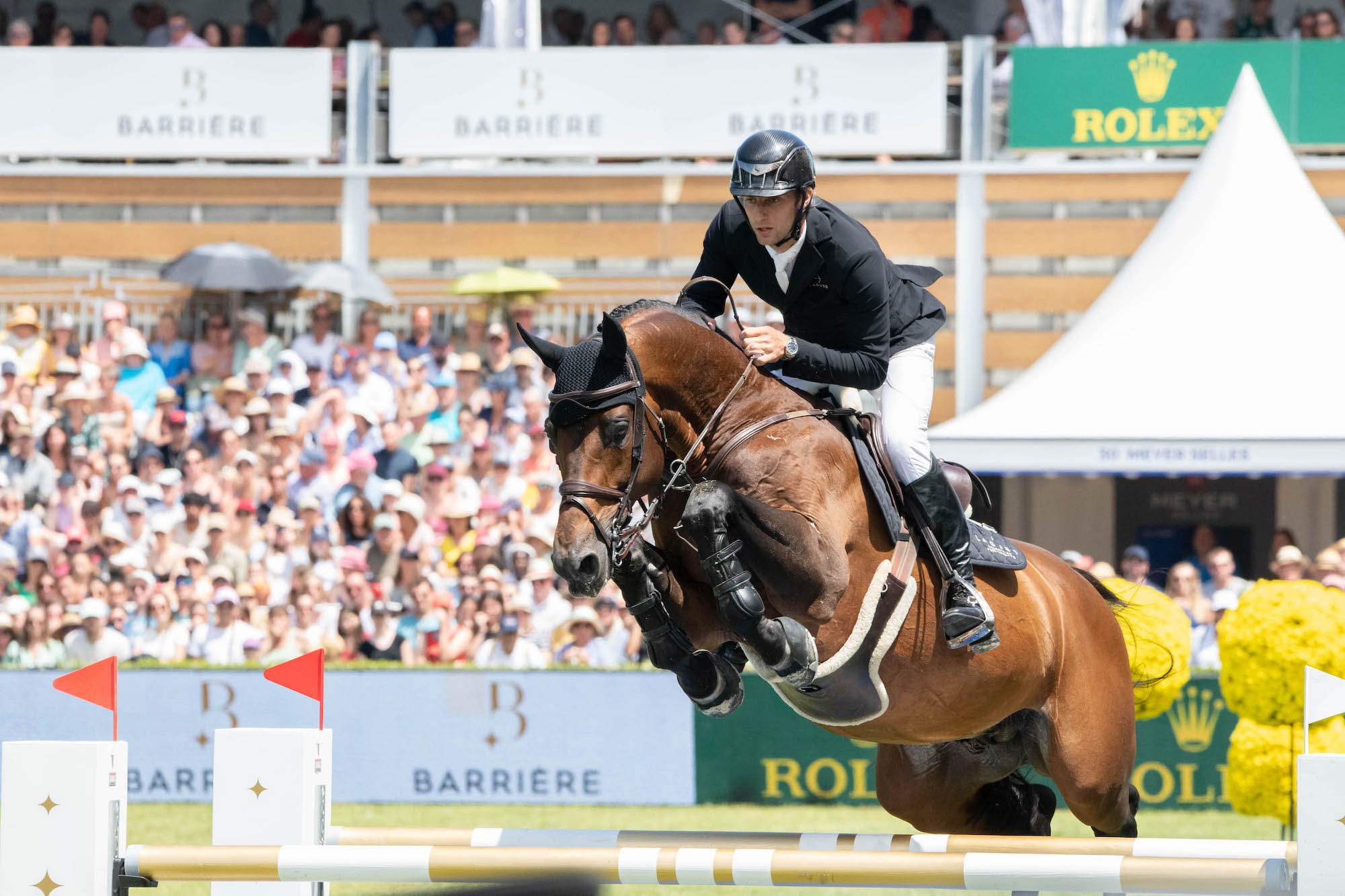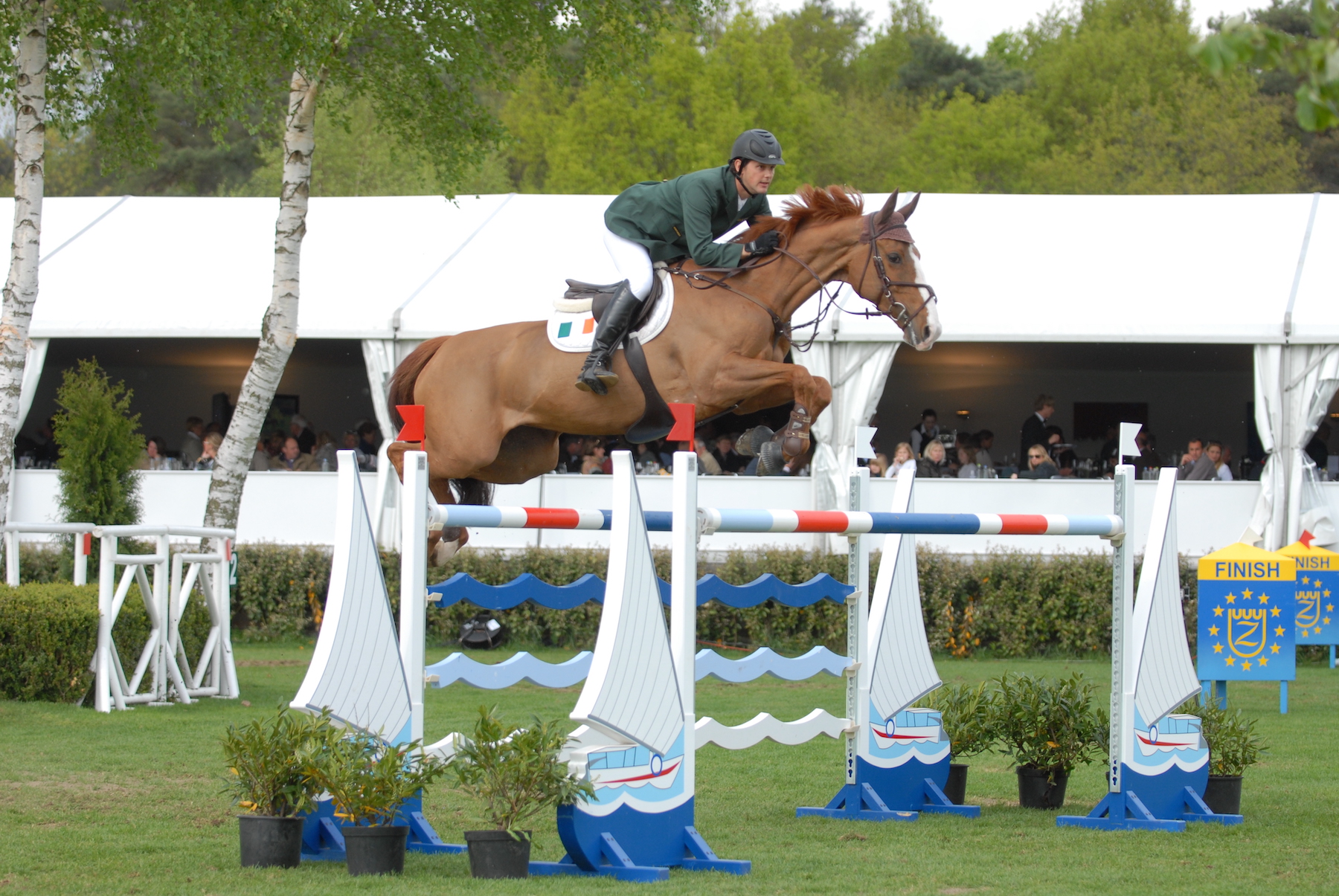What are the challenges of ICSI?
 Ovum pick up and ICSI, initially designed to solve fertility problems, have evolved to transcend the simple pathological framework. Their significant impact on the breeding world has broadened our perspectives as breeders and optimized the economics of sport horse production.
Ovum pick up and ICSI, initially designed to solve fertility problems, have evolved to transcend the simple pathological framework. Their significant impact on the breeding world has broadened our perspectives as breeders and optimized the economics of sport horse production.

What are the advantages, depending on the mares selected?
Young mares

Before Sports testing
Breeders have a crucial period in which to initiate the reproductive careers of their mares, before embarking on their sporting careers. The use of intracytoplasmic fertilization (ICSI) offers the possibility of taking advantage of this window, allowing the production of frozen embryos without the need for foal maintenance in the event of a disappointing evaluation.
Pre-marketing
The lucky breeder who owns an exceptional young mare soon finds himself faced with buyers. In this situation, it becomes difficult to obtain the time concession needed to carry out an embryo transfer, and even if this were possible, the results could be inconclusive. Performing ICSI at an early stage offers the possibility of preserving a mare’s genetics, whatever her future destiny.
Keeping buyers happy
Although your young mare is eager to acquire offspring, neither you nor your rider want to interrupt her training, even if only for the duration of a transfer. ICSI at an early stage gives you the option, on request, of implanting frozen embryos or selling them as they are, enabling you to reap the rewards of your young mare’s sporting career.
In competition

Sports schedule
The coincidence of the embryo transfer season with the sporting calendar makes the delicate decision of when to interrupt the mare’s training or competition schedule all the more complex.
Ovocyte puncture can easily be performed at any time of year, and the winter months are generally compatible with the sports break.
Financing sport
Your mare’s sporting career is when her visibility reaches its peak, arousing the admiration of those who dream of one of her pregnancies.
ICSI has made it possible to obtain frozen embryos, carefully preserved while waiting for the right moment to sell exceptionally coveted pregnancies and foals.
Age mare

for comfort
Older mares are often the ones who appreciate the comfort of your pastures the most, and don’t tolerate changes very well, especially in summer. Spending several weeks or even months (due to their low fertility) in an AI center is hardly the most pleasant solution for them.
Ovocyte puncture requires only 3 days of the mare’s life, so her lifestyle can be respected. The gynecological procedures associated with oocyte puncture are painless (more on this later). This technique is perfectly suited to the needs of our respectable older mares.
Last chance
Beyond the age of radiant fertility, mares soon face uterine and hormonal regulation problems, finally culminating in the onset of menopause. This deterioration in fertility initially forces them to use increasingly fertile stallions, even if these choices don’t necessarily match their characteristics or the breeder’s aspirations. This situation inevitably leads to a dead end.
ICSI is emerging as an innovative solution that transcends the obstacles associated with uterine problems, an organ that is not involved in the process of this technique. ICSI makes it possible to extend the age at which a mare can give birth to a foal to 23-24 years, without the constraints associated with choosing a stallion. This technological breakthrough offers a promising alternative, enabling breeders to make selective and desired crosses, even in mares at the end of their reproductive careers, thus opening up new perspectives in breeding.
Breeders

expand and diversify
An excellent breeder can quickly build up a stock of embryos. This gives him the flexibility to implant embryos according to his own long-term timetable, or even to exchange cryopreserved embryos. By opting for this approach, the breeder is able to diversify his breeding operation without having to acquire or maintain a new mare. At the same time, it establishes an exchange network that is becoming essential in the sector.
produce female
Sexing frozen embryos is a crucial step for breeders who don’t want to give birth to males, a task that doesn’t fit in with their commercial activity.
The use of the intracytoplasmic sperm injection (ICSI) technique offers the breeder the possibility of directing the birth exclusively towards the production of females. This approach then enables the breeder to trade or sell the males resulting from these embryos, potentially to stud farms, if they wish to integrate them into their specific breeding programs. This approach, guided by greater control of the breeding process, is part of an economic and strategic rationale, optimizing livestock management and responding to specific market needs.
Your mare's ICSI course at the Châtenay center
Please note that this video was made in 2020, and certain aspects of the process, such as epidural sedation and the results, are no longer current.

Arrival of your mare at the Châtenay center
The Centre de Châtenay can carry out the health analyses required for your mare in accordance with a specific protocol. The mare’s vaccination status must be up to date for these analyses to be carried out. In addition, the mare’s acceptance at the center will be conditional on the provision of complete administrative documents, including the ovum pick up Contract and the accommodation agreement. These formalities are essential to guarantee compliance with sanitary and administrative standards, thus ensuring an optimal environment for future procedures.

Ultrasound monitoring and puncture planning
When your mare arrives at the center, our veterinarians carry out in-depth health analyses and perform the first ultrasound scan to assess the number of “puncturable” follicles. If your mare is deemed fit, she will be enrolled in the Ovocyte Puncture program, which usually takes place on the following Monday or Tuesday. Our extensive capacity means we can meet all requests without having to resort to a waiting list.
If your mare does not have a sufficient number of follicles at the time of the first evaluation, she will undergo another ultrasound scan within a week. This careful monitoring ensures optimal, individualized care, guaranteeing that each stage of the Egg Cell Puncture process is meticulously adapted to each mare’s specific situation.

Ovum pick up (OPU)
Ovocyte puncture is performed under anesthesia, excluding the use of epidurals. During this 45-minute procedure, the mare experiences no discomfort or pain, which is imperative to guarantee the feasibility of the technical operation.
The procedure involves puncturing all the follicles using a needle and ultrasound probe inserted transvaginally. In this delicate process, the veterinary gynecologist ensures the stability of the ovary by holding it against the probe, this action being performed transrectally. This meticulously orchestrated methodology ensures that the oocyte puncture goes smoothly and respects the mare’s well-being.

Post-OPU management of the mare
Following ovum pick up, your mare is gently led to the recovery stall. Within 5 minutes of the procedure, the mare regains consciousness, and her behavior returns to normal. Careful monitoring over a 3-day period will be ensured, including regular administration of antibiotics. At the end of this follow-up period, your mare will be able to return to her usual activities at home, whether in sport or breeding, with complete peace of mind.

Preparation of collected oocytes
Our team manages to recover around 70% of available oocytes, a remarkable average. These oocytes undergo meticulous processing in our laboratory, guaranteeing an optimal journey to the ICSI laboratory, in this case Avantea.
The added advantage of the Châtenay center lies in its strategic position on the Belgium-Italy axis. The oocytes travel with the HippoXpress company, eliminating any worries about international carriers. So you can have complete confidence in the safety and efficiency of the transport process, helping to ensure seamless continuity in oocyte processing.

ICSI
At Avantea, after a maturation period of 24 to 48 hours, the oocytes are fertilized with the semen of your choice (see ICSI standard catalog). Ten days after oocyte puncture, viable embryos are frozen, enabling them to be preserved indefinitely.
Thanks to the combined expertise of Châtenay and Avantea, we are proud to boast a remarkable production rate of 2.4 frozen embryos per mare per oocyte puncture. This performance attests to the quality of our procedures, highlighting our commitment to excellence in the field of equine reproduction.

Implanting your embryos
Embryos frozen at the Avantea laboratory are sent to the Châtenay center by direct transport, accompanied by all their health documents. These precious embryos are stored on your behalf, awaiting your instructions for the crucial implantation stage. The positive reimplantation rate at 45 days is an impressive 73%.
An additional advantage of the intracytoplasmic sperm injection (ICSI) technique is the possibility of providing your own young mare of gynecological quality, ideally suited to the gestation of your embryos. This approach eliminates the need to use a mare rental service, providing an advantageous and efficient alternative in the assisted reproduction process.
Documents
Our administrative team, in collaboration with Sébastien Neyrat and Châtenay center manager Florine Dufournel, offers you support and transparency throughout the process. We remain at your disposal at any time to provide clarifications, if the information automatically received raises questions.
Demystifying ICSI
The mare's comfort
Cost of ICSI vs. embryo transfer (frozen semen)
Results of oocyte puncture at Châtenay
Chasing preconceived ideas
ICSI is painful for the mare!
As mentioned above, it would be possible to address the management of the mare’s comfort. However, this approach may not be sufficient to convey all the crucial elements. In this context, the predominant argument remains the comparison with human experience. When a woman undergoes an oocyte puncture (48,000 cases in 2020), she is asked to remain still despite the discomfort. On the other hand, no speech or mechanical restraint device should be used to force the mare into immobility at the slightest sign of discomfort, as such movements would make oocyte puncture impossible. So when we puncture a mare, it’s because she doesn’t feel any unpleasant sensations.
ICSI damages the mare's ovary!
The ovary is made up of dense scar connective tissue, a substrate which, by its very nature, is accustomed to significant remodeling during follicular growth and ovulation. Indeed, while the rupture of a 70 mm follicle leads to rapid and effective healing, the introduction of a needle during oocyte puncture remains a completely harmless procedure for this organ. Just a few days after the procedure, no visible marks remain, and new primordial follicles emerge.
Ovocyte puncture can sometimes result in the destruction of cystic areas. Interestingly, in five cases observed, mares with profoundly disturbed ovarian function showed significant improvement. These individuals returned to regular, high-quality cycles, testifying to the unexpectedly beneficial effects of this procedure on reproductive dynamics.
ICSI reduces genetic diversity!
As soon as a mare generates a higher number of foals than any other method, it’s true that it theoretically reduces genetic diversity. However, critics of this preconceived idea invoke arguments that are more akin to outdated patriarchal behavior. Indeed, no one seems troubled by the idea of a stallion producing 600 foals from fresh semen, whereas the idea of a mare producing 5 foals seems to ruffle feathers. Let’s get serious!
Don’t let yourself be blinded by auction catalogs which, it’s true, mainly offer ICSI-derived gestations and concentrate on a few strains considered “bankable”. However, it should be noted that these sales account for only a tiny fraction of the total number of gestations produced by ICSI. In 2022, of the 175 mares undergoing oocyte puncture at the châtenay center, only 5 shared a common maternal ancestor.
Please note that these videos have been


